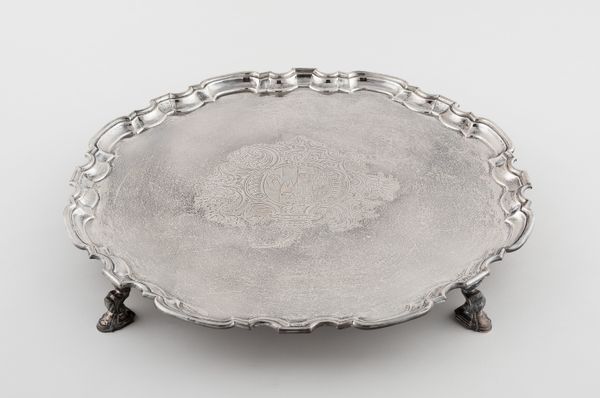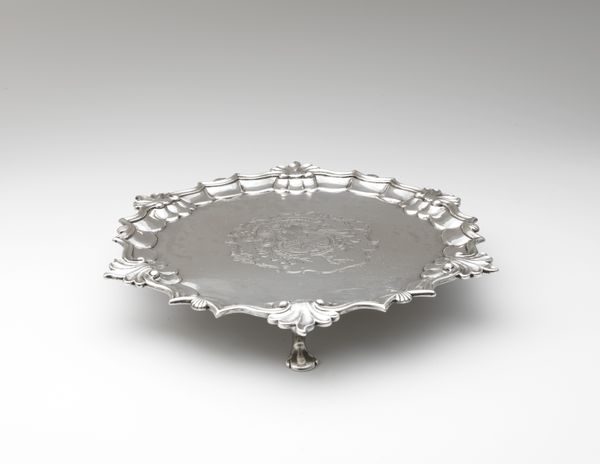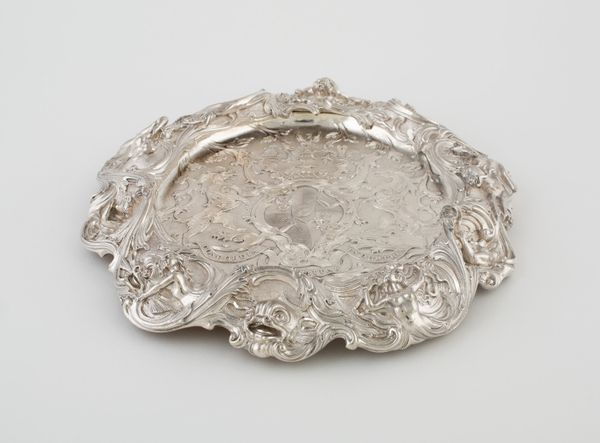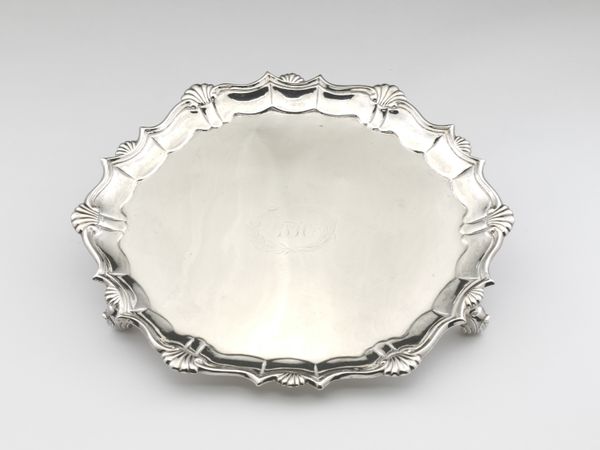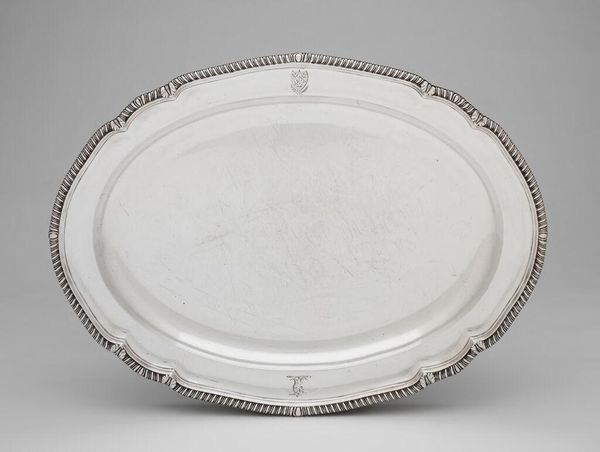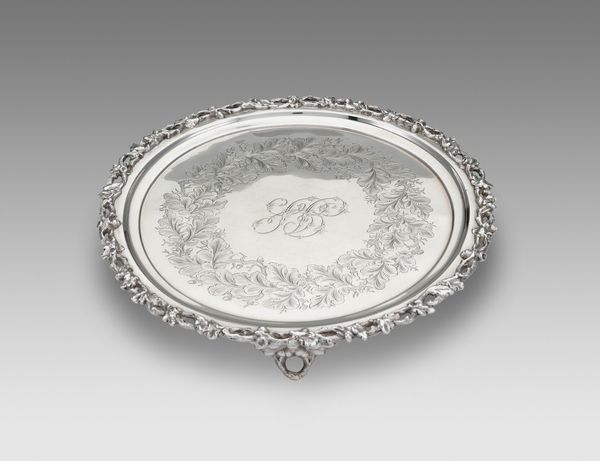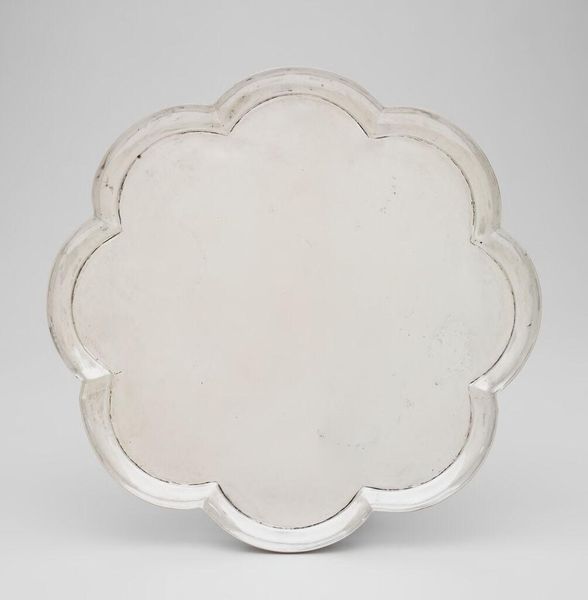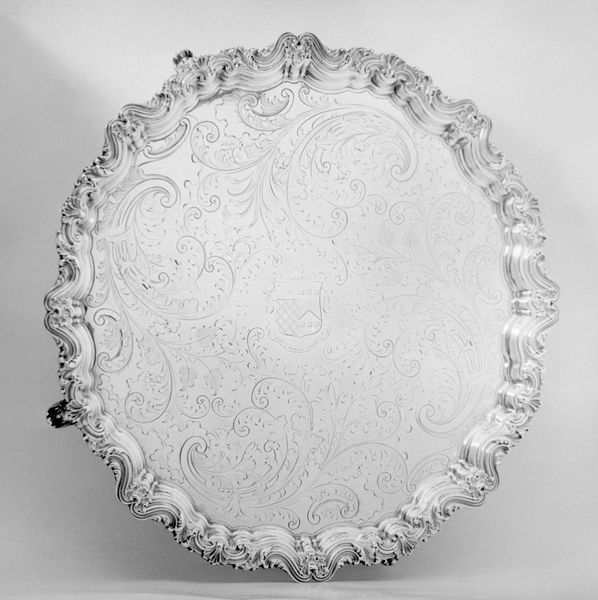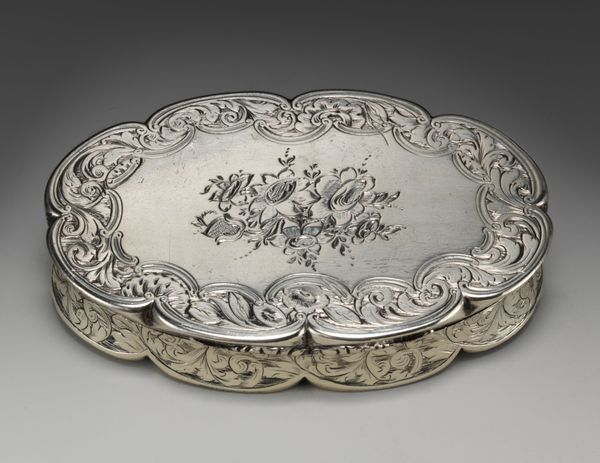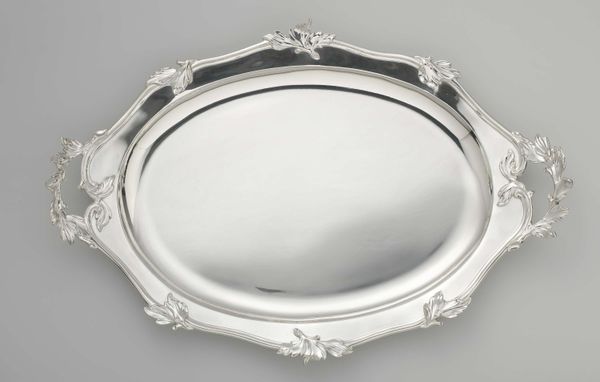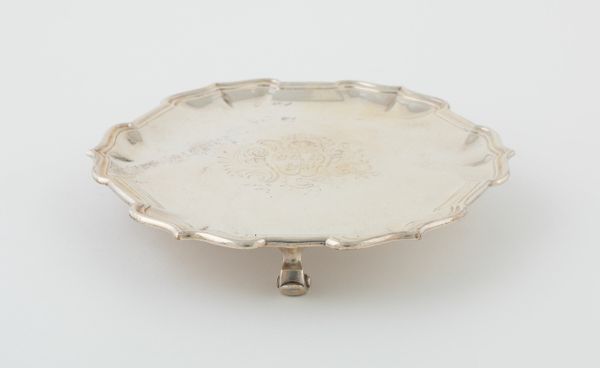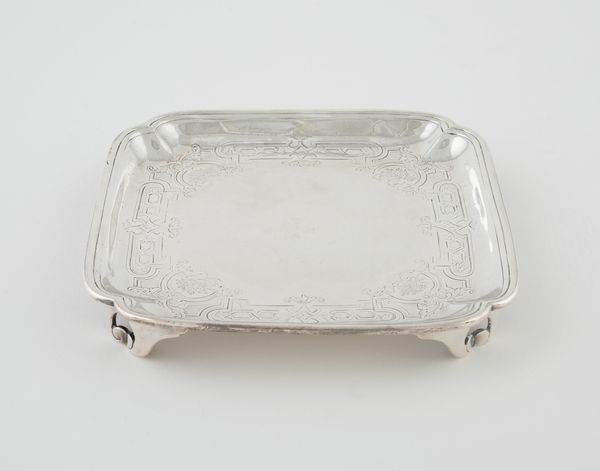
silver, metal
#
silver
#
metal
#
form
#
decorative-art
#
rococo
Dimensions: 6.4 × 56.8 cm (2 1/2 × 22 3/8 in.)
Copyright: Public Domain
Curator: This exquisitely crafted object is a silver tray, made around 1755 or 1756. You can find it here at the Art Institute of Chicago. Editor: Immediately, I’m struck by the Rococo extravagance. The intricate, undulating form reads almost as theatrical. What story do you think it’s meant to tell? Curator: Well, considering the era, it would have undoubtedly signaled status and power. These highly decorative objects were intended to perform wealth, class, and taste. Consider the labor and skill that went into such an object, reserved, of course, only for an elite few. Editor: Right, the symbolism is very potent here. The symmetry evokes order, the silver evokes purity. Then there are those small, almost claw-like feet that anchor it; the tray itself feels like a vessel. The elaborate design around the edge calls up a strange naturalism; look at the swirling leaves and shell-like details. What purpose would it have served? Curator: It could be used to serve food, but such objects would mostly be a visual and symbolic reinforcement of class status. The aesthetic is almost violent in its indulgence, if that makes any sense. Editor: Absolutely, violence isn’t necessarily blood. It's labor and resources, displayed with such ease. And the weight, it almost exudes luxury. This era loved decoration. Curator: That’s absolutely right. And it becomes so much more resonant when you position an object like this in the wider context of, say, French colonialism during this period. This is how these elite societies presented themselves even as their structures were being challenged, undermined even, by revolutionary sentiment and new economic models. Editor: I can definitely see echoes of those broader historical currents, embedded in its curves and swirls. It makes me consider ideas of control and fragility—how even the most impressive display of power might conceal underlying anxieties. Curator: These material objects offer insights into complex human power structures, and, when placed within larger socio-political narratives, we can further unpack these symbols. Editor: Examining these objects really brings history to life! The intersection of aesthetic values, material display and social critique... very rich.
Comments
No comments
Be the first to comment and join the conversation on the ultimate creative platform.
